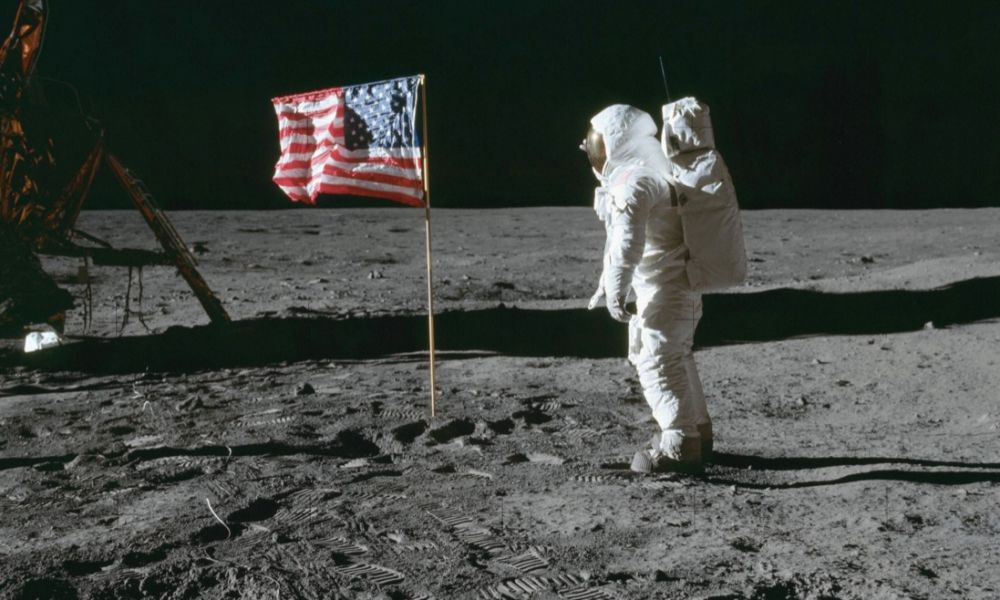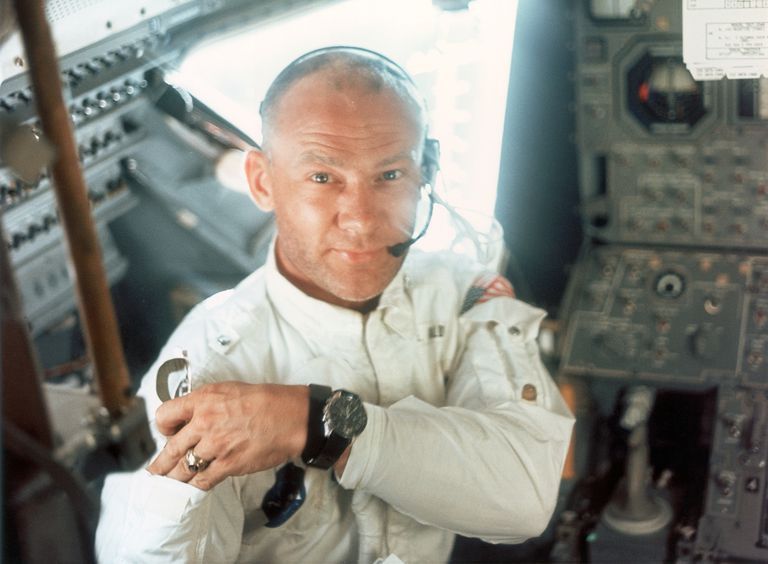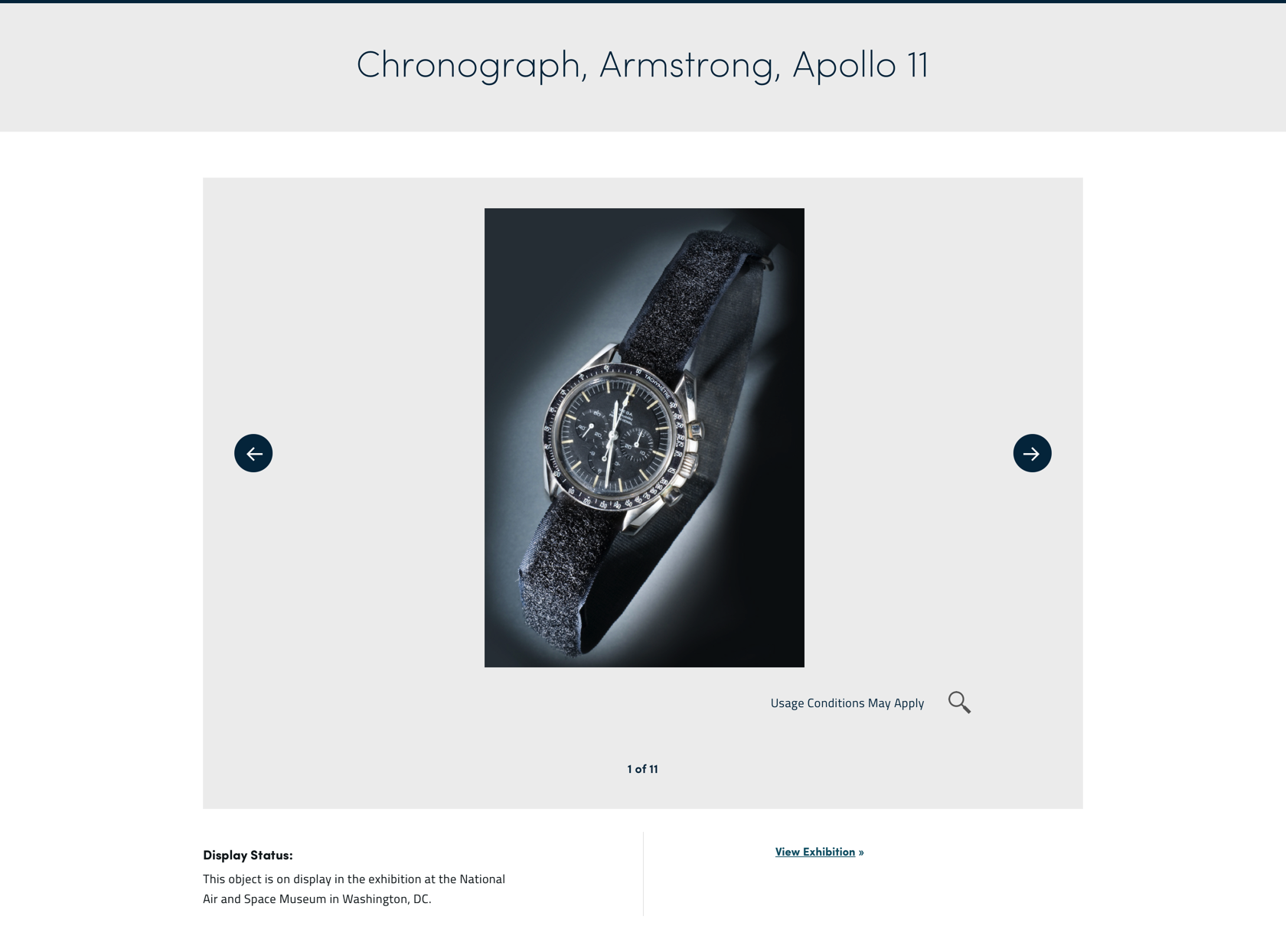THE STORIES. Fifty years ago Armstrong and Aldrin conquered the moon
the historic event and the primacy of the omega and its speedmaster
▣ JULY 20, 2019 by ENRICO AURILI
Share:
The images of the moon landing relive in the memories of those who attended that historic mission, but also in the youngest who saw them many years later.
It was on 20th July 1969 when the crew of the Apollo 11 mission, which took off four days earlier from the Kennedy Space Center, was in the orbit of the moon on the module “Eagle”. On board the two astronauts Neil Armstrong and Buzz Aldrin are intent on the descent to the lunar surface and at 20:17:40 UTC, a day that will remain in the annals, one of the external probes of the module turns on the indicator “Contact light”. It’s the expected announcement: the Eagle has landed.

Image from the web
The landing as the the famous quote pronounced by Armstrong once stepped off the module “That’s one small step for [a] man, one giant leap for mankind” are memories that certainly arouse emotion. Feeling particularly felt by watch enthusiasts and collectors because that 20th July of fifty years ago (21st July in Italy), while the astronaut Michael Collins awaited them in orbit on the command module Columbia, Neil Armstrong, Buzz Aldrin and the Omega Speedmaster ref. ST105.012 that the latter wore on his wrist conquered the moon for the first time.
It could be argued that the history of space isn’t only made up of “people”, but also of watches and that all began on 21st April 1961 with the Soviet mission which brought Yuri Gagarin and his wristwatch Sturmanskie aboard of the Vostok 1. From then on many watches that were wore, both by Russian and American astronauts, were able to stand out to have reached the cosmos. Anyway the Speedmaster is the one who, thanks to this emblematic mission, has entered the annals and in the collective imagination.

Buzz Aldrin, Credits Image Space Frontiers Getty
If Neil Armstrong was the first man to set his foot on the lunar surface, it so happens that due to a failure of the on-board chronograph the commander of the Apollo 11 mission decided to leave his Omega Speedmaster on the spacecraft in replacement of the faulty instrument, leaving the honor to the Buzz Aldrin’s Speedmaster to be the first watch to “cross” the moon. An event of absolute appeal and importance for the world of collecting that even more makes regret the mysterious disappearance of the Omega belonged to Aldrin. Vanish occurred in 1971 during the transfer of the watch to the Smithsonian National Air and Space Museum.
For enthusiast, may hearten in part that the exemplar belonged to Neil Armstrong arrived safe in 1973 at the Smithsonian Museum in Washington DC where it’s still possible to admire.
Given the disappearance of the watch, for a long time there was a debate whether the watch worn by Buzz Aldrin was a Speedmaster reference 145.012 or 105.012. As wrote on the monochome-watches website, today is almost certain that both astronauts had two Omega Speedmaster ref. ST105.012. This information was revealed by the Omega Museum after the research done in collaboration of James H. Ragan, former engineer of NASA’s space program.
Screenshot Smithsonian Museum site
Omega Speedmaster Professional ST105.012
The reference ST105.012 was produced since 1964, in the same period when was ending the previous 105.002 and few months ahead of the parallel model 105.003. In the Speedmaster watch series, ref. 105.012 is also characterized by being the first to claim the “Professional” word on the dial.
If the ref. 105.003 was the one that NASA used for testing and which Ed White later wore during his spacewalk, the ref. 105.012 was the one chosen for the Apollo missions.
The characteristics to keep in mind of this reference are:
| Caliber: | 321 |
| Case: | asymmetrical and lire lugs |
| Bottom: | Speedmaster logo with the central hippocampus, double bevel on the edge |
| Dial: | Swiss Made and T Swiss Made T |
| Bezel: | diagonal dot at 70 |
Altri/ARTICOLI



